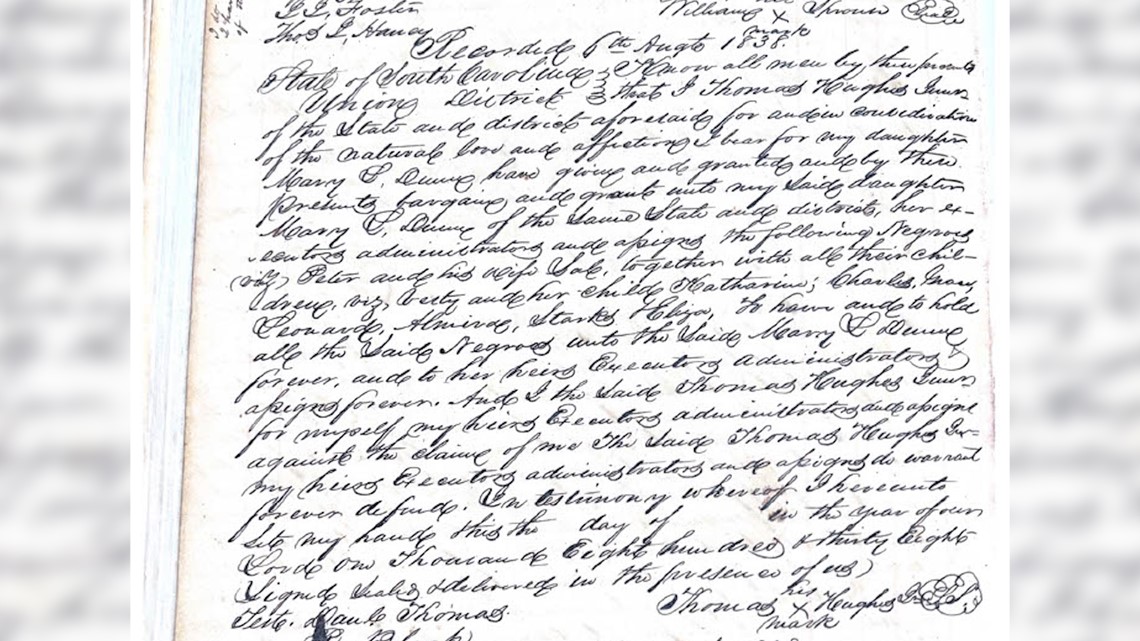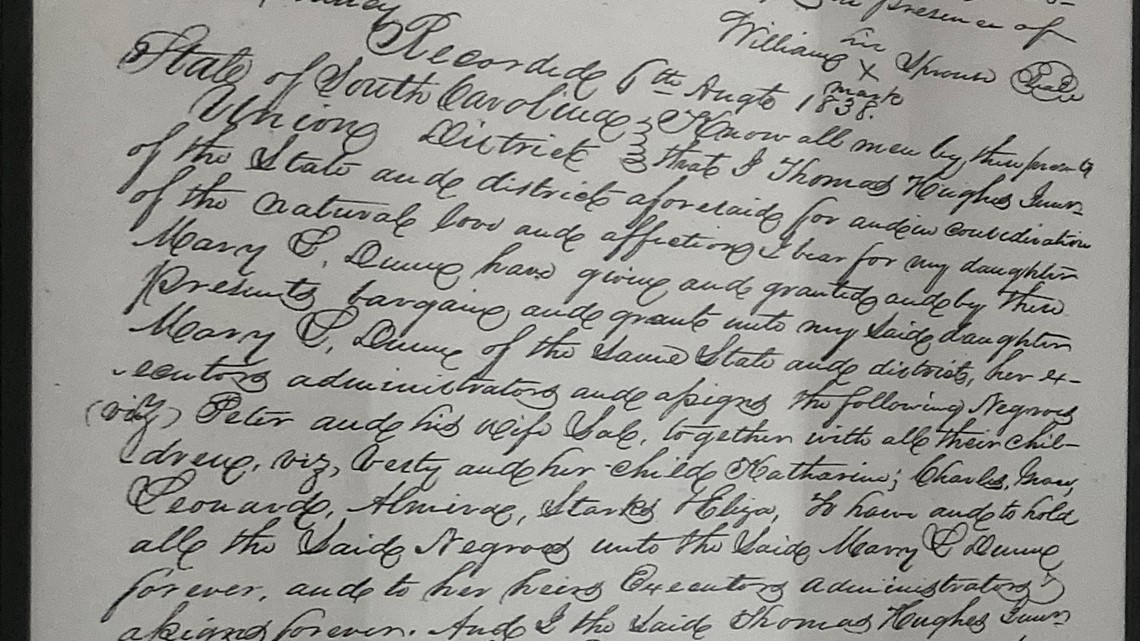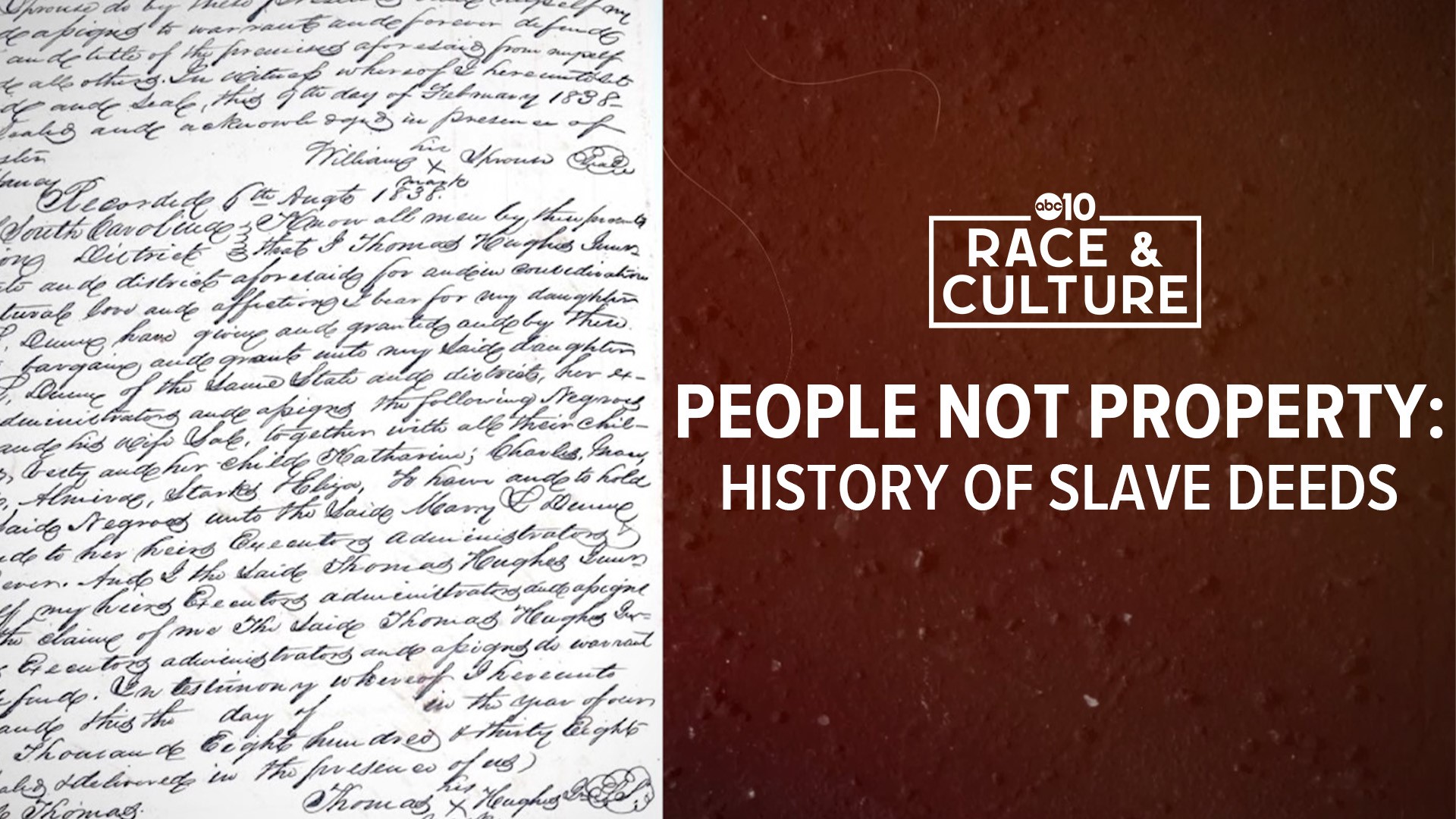DIXON, Calif. — As a genealogist, Gerald Gordon, who lives in Dixon, is facing America's dark past.
Gordon typically spends hours each day combing through public records and historical documents to trace his African American roots. After digging through old family papers, he says he learned about his great-great-grandfather, Peter Hughes.
"I knew his name," said Gordon. "I knew that he had two children. I knew that he was born in South Carolina in 1795."
For Gordon, the biggest turning point was getting a copy of a slave deed from the Union County Courthouse in South Carolina. Slave deeds are property deeds registered with County Courts and Registers of Deeds that contain information about enslaved people.


The slave deed Gordon obtained describes how a slave owner, Thomas Hughes, gifted his daughter, Mary L. Dunn, an enslaved Black family. The deed is dated Aug. 6, 1838. It lists Gordon's ancestors by name, including "Peter, his wife Sale, together, with all their children."
"It was really hard for me to understand all of this because in school, they didn't teach us anything about Black history," said Gordon. "I know a whole lot about Thomas Jefferson, Benjamin Franklin and George Washington. But I didn't know that much about my history. So, everything that I have found out now is through genealogy, talking to relatives and social media."
During the slavery era in America, enslaved people were considered property by law. Slave owners used handwritten books and receipts to carefully document the selling, buying, renting or gifting of enslaved people.
Slave deeds, like a Bill of Sale, legally transferred ownership of the so-called "property" from one person to the next. Through Fugitive Slave Laws, free states, like California, captured and re-enslaved Black people living in freedom.
"When California enters the Union in 1850, California is a free state," said Dr. Elisa Joy White, Associate Professor of African American and African Studies at UC Davis. "Individuals could come to California to be free, but, potentially, also be brought back into bondage. That's because a Bill of Sale said somebody owned this individual and that was binding."
Some slave deeds provided a short description of the enslaved person, like skin complexion and other physical features. Some deeds also listed the enslaved person by name and age, while others only described the enslaved person by a number.
"The Bill of Sale, like other documentations and records of enslavement, are very important for genealogists," said White. "They're also important for anyone who wants to know the true story of the United States of America."
For Gordon, the slave deed is a significant step forward in finding other ancestors and family members.
He posted a copy of the enlarged and framed deed on the wall in the living room of his home. The deed is surrounded by Gordon's family photos -- past and present. To this day, he uses the display of love to honor his ancestors, giving life and dignity to people documented as property.


"I feel good because I found my family," said Gordon. "Every morning, I wake up, I walk in my living room, I see the deed and I say 'Good morning, family.' I told my children as much as I could about our family. Maybe that's one thing my dad and mom didn't do for us because when they were growing up, it was very painful. This is Black History Month, and I hope everyone will try to find their people, so they can share their story, too."
WATCH ALSO:

















